Spot 16 animals in Enchanted Rock State Rock with our hiking guide, tips, and photos included.
Buckle up, nature aficionados! Enchanted Rock State Park isn’t just about giant boulders and panoramic views; it’s a full-on animal kingdom waiting to be discovered.
In this adventure-packed article, we’re taking you through a rollicking roll call of the 16 wild critters we’ve encountered on our hikes, complete with photos and how-to-see-them tips.
Imagine tiptoeing along a sun-dappled trail when a deer bounds across your path, or a raccoon scurries up a tree. Maybe you’ll spot the flutter of the Checkered White Flight butterfly, or hear the melodious call of a Meadowlark.
And let’s not forget the sly foxes, the armored armadillos, and yes, even the elusive bobcats that might grace you with a rare appearance.
From the tiny fairy shrimp to the soaring black vulture, our guide is brimming with firsthand insights, thrilling encounters, and pointers on enjoying these wild wonders while keeping safe. Ready for a hike on the wild side? Let’s get started!
The Rock Wren
The Rock Wren is a small bird that is often seen near the cliffs and rock formations in Enchanted Rock State Park. This wren is gray with a white breast and has a black tail with white outer feathers. The Rock Wren is known for its loud, melodious song which can often be heard echoing through the canyons.
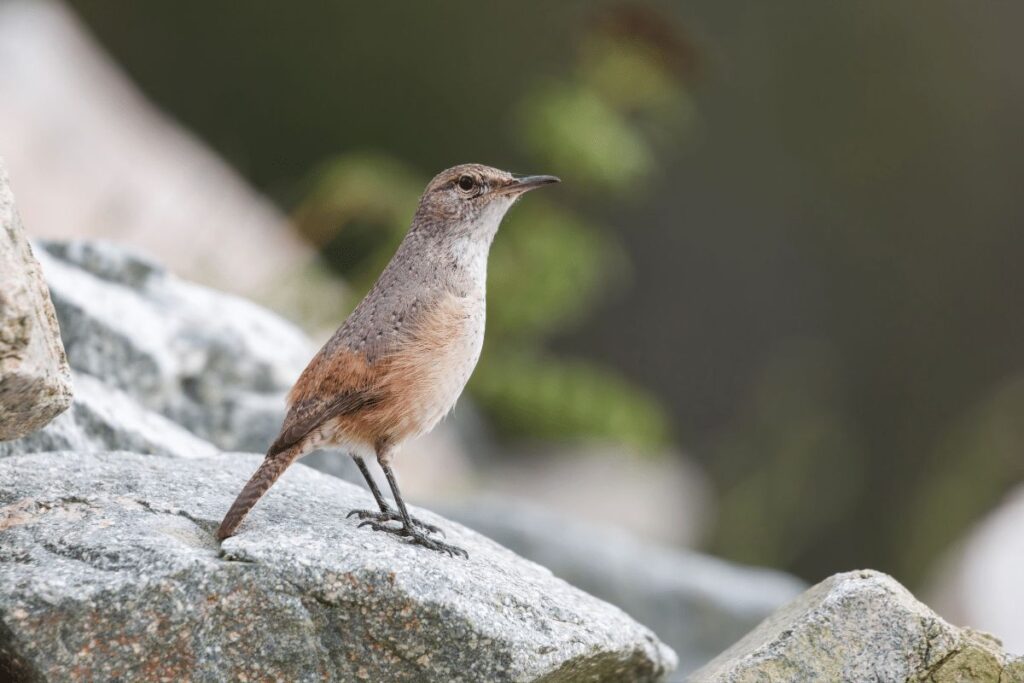
The Rock Wren feeds on insects, seeds, berries, and small lizards. It builds its nests in crevices and hollows along the sides of rock walls or at the base of cliffs. In winter, the Rock Wren often forms large flocks that can be heard calling as they search for food.
The Rock Wren is a common bird throughout the area and can be easily spotted with some patience and binoculars. Its distinctive song is a reminder of life in an ancient landscape and provides a pleasant soundscape to those visiting this unique part of Texas.
Deer
Deer are one of the most commonly seen animals in Enchanted Rock State Park! They have often seen grazing on the grasses and herbs in the meadows or browsing on the leaves of bushes and trees.
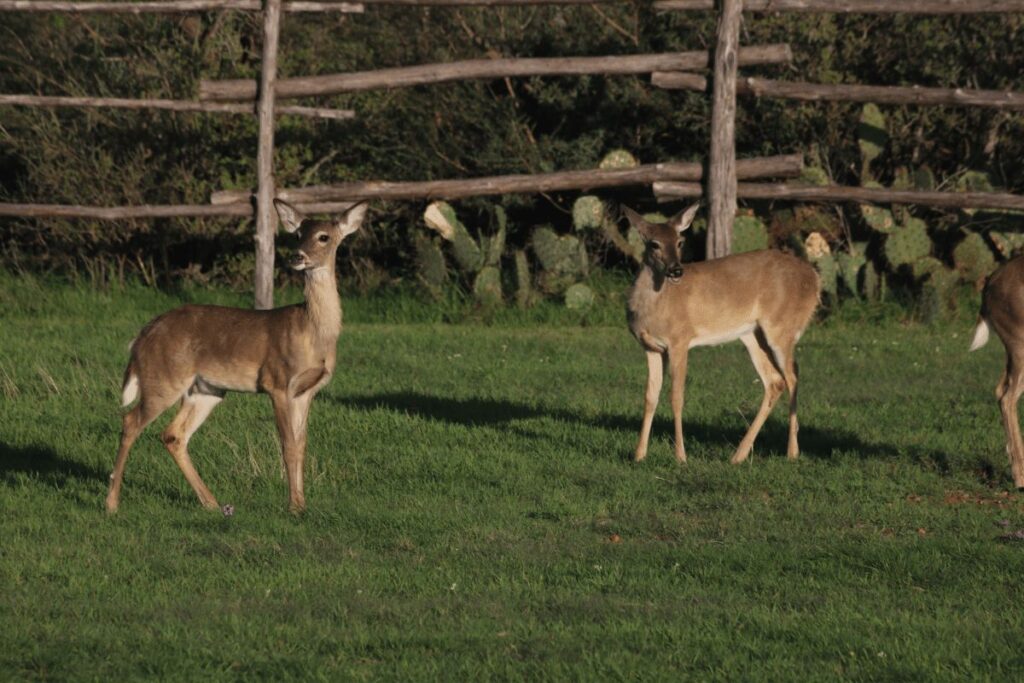
During the fall and winter, deer eat acorns and other nuts that have fallen to the ground. In Enchanted Rock State Park, there are two species of deer: mule deer and white-tailed deer.
Mule deer are larger than white-tailed deer, with a stockier body, larger ears, and a black-tipped tail. White-tailed deer are more slender, with smaller ears and a white underside to their tail.
Deer are mainly active during the early morning and late evening, resting during the middle of the day. However, during cooler weather, they may be seen during daytime hours. Deer are herbivores, so their food sources depend on what plants are available in their habitat.
In Enchanted Rock State Park, deer feed mostly on acorns and other nuts from trees, grasses and herbs from meadows and other vegetation from around the park. Deer will also occasionally feed on fruits and fungi when it’s available.
Bobcats
When Bobcats aren’t busy stalking prey, they lounge in the sun or nap in a tree. These nocturnal predators are loners, except when females are raising kittens or when two males happen to meet.
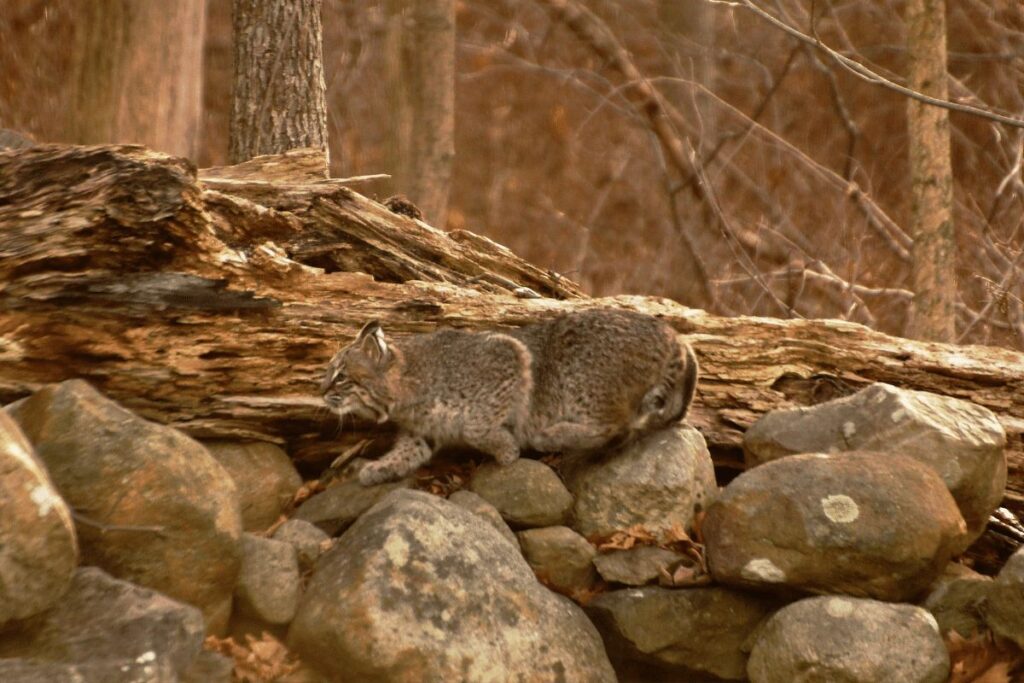
They vocalize with a series of guttural sounds, yowls and growls—and sometimes screams that send chills down your spine. During mating season, male bobcats make long vocalizations that can be heard for more than a mile.
Bobcats are found throughout North America, and their numbers appear to be healthy. Bobcat fur is gray to reddish brown on top and white underneath; they have black tufts of fur on the tips of their ears.
They measure 2-4 feet in length, about half of which is tail, and weigh 8-20 pounds. Bobcats tend to hunt rabbits, hares and rodents, but also take birds, reptiles and amphibians when possible. They’re also opportunistic scavengers; in some areas skunks are regularly hunted as well.
The Blotched Water Snake
These snakes are aquatic, but often seen basking on emergent vegetation, shore, on floating debris or limbs overhanging the water on sunny days. They prefer wooded shores of quiet waters such as canals, sloughs, and wetlands. Prey items include frogs and fish.
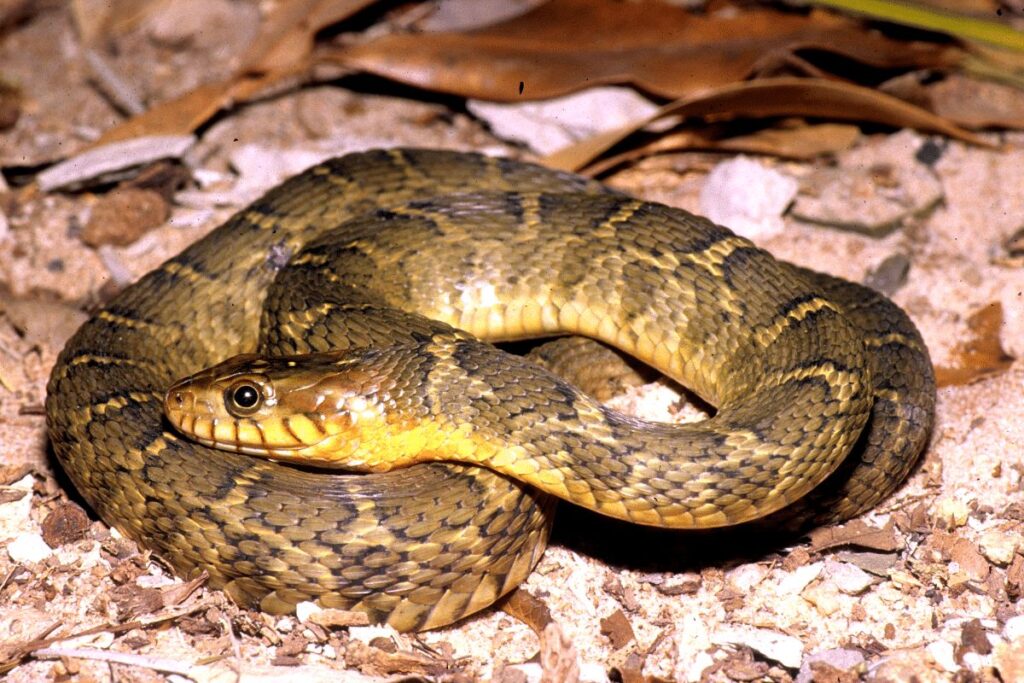
Appearance – On a ground color of greenish gray to greenish brown there is a row of large, black-edged, dark, vertebral blotches and below these a row on each side of smaller black-edged alternating spots. Belly yellow with a dusky marking on each side of all ve
They can grow up to 6 feet in length but are more commonly around 3-4 feet long. These snakes are good swimmers and often live near bodies of water such as lakes, rivers, and ponds. They eat fish, frogs, and small mammals.
Blotched water snakes are not endangered, but they are in decline due to habitat loss and certain environmental conditions. If you come across them in the wild, please do not attempt to handle them since they can become aggressive. Instead, admire from a distance and enjoy their beauty from afar.
Raccoons
There are many different animals that can be seen while hiking through Enchanted Rock State Park. Raccoons are one of the most common animals spotted in the park. They are usually seen near garbage cans or rummaging through campsites in search of food.
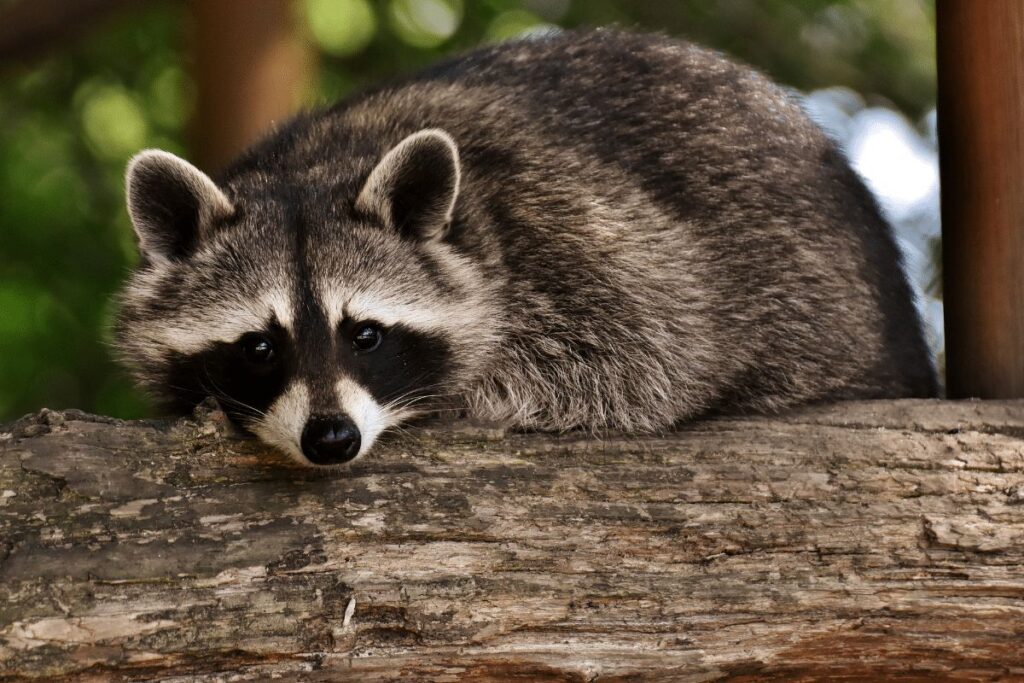
Although they may look cute, it is important to remember that raccoons can be dangerous animals and should not be approached.
If you do see a raccoon while hiking, it is best to keep your distance. You should never feed them or try to touch them. Additionally, it is important to make sure that any food you bring with you is kept in secure containers and garbage cans should be tightly sealed. Doing this will help ensure the safety of both yourself and the animal.
Foxes
Foxes are often seen near the popular hiking trails in Enchanted Rock State Natural Area. They are most active in the early morning and evening hours, but can be seen at any time of day.
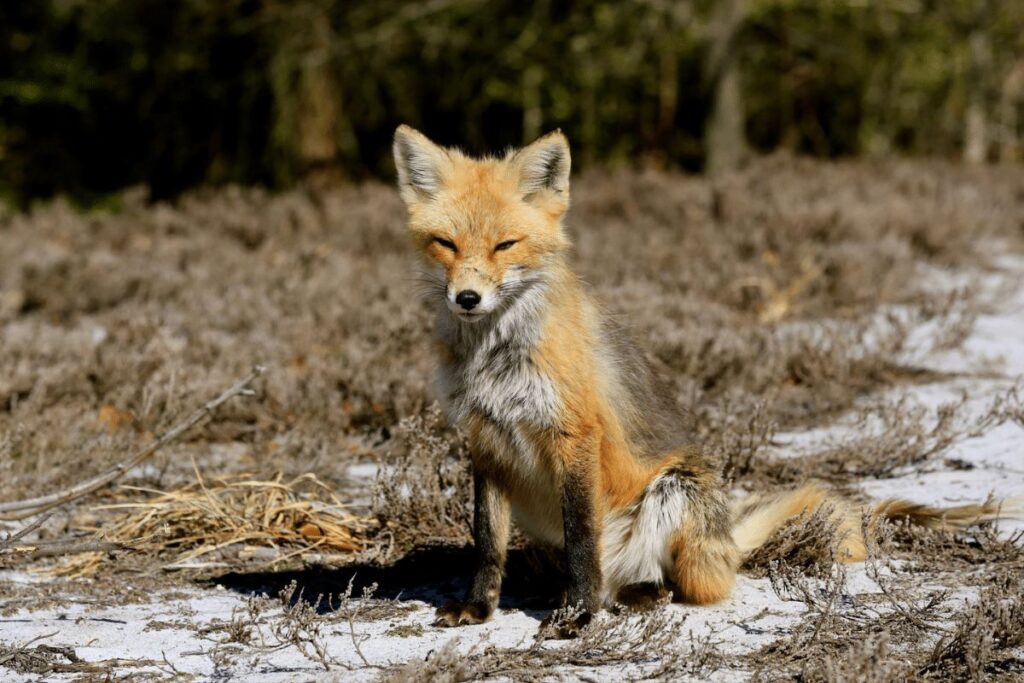
Foxes typically weigh between 9 and 13 pounds, and their coats can be any color from red to grey. These intelligent animals are known for their cunning ability to survive in the wild, and are often prized by hunters.
Foxes are very active and often use the Enchanted Rock trails as a means of transportation. They can be seen traveling from one spot to another, usually in search of food or shelter. Foxes mainly feed on small mammals, such as mice, rabbits, voles, and ground squirrels. Occasionally they will also eat insects and fruit.
In addition to their diet, foxes have several other distinct behaviors that make them an appealing subject for observation. For instance, they often bark or howl at night which adds a bit of mystery to the forest air! They are also quite agile and capable of leaping 6-10 feet into the air.
Foxes are a fascinating species to observe in their natural habitat, but also need to be respected by people who hike through their territory. Always practice caution when hiking near foxes, as they may become defensive if they feel threatened or startle easily if approached too closely.
Coyotes
Coyotes are a common sight in Enchanted Rock State Natural Area! These predators play an important role in keeping the delicate balance of nature in check. Coyotes typically hunt at dawn or dusk, so if you’re hiking during these times, be sure to keep an eye out for them!

Coyotes are also known to scavenge and make noise while doing so. Coyotes are most vocal in the early morning hours, so you may hear their yipping or howling. Coyotes tend to stay away from crowds, so if one is spotted – move away calmly! Never approach a coyote, as this can be dangerous for both you and the animal.
Enchanted Rock State Natural Area is known for its abundance of wildlife, and coyotes are no exception. You can even see them in the park! With a bit of patience and luck, you might catch a glimpse of one while out on the trails – just remember to observe it from a distance and never try to approach it.
Cute Armadillos
Armadillos are one of the most popular animals in Enchanted Rock State Rock! They’re small, cute, and harmless, making them perfect for taking pictures with or simply admiring from a distance. While they may not be the most exciting animal to see on your hike, they’re definitely a neat addition to the park’s ecosystem.

Their shell is made up of bony segments that are covered with a layer of leathery skin. Unlike other animals, they’re able to curl up into tight balls when they feel threatened or become frightened, protecting themselves from predators. You might also see them out and about at night as they search for food like worms and insects.
Armadillos are an interesting species that can live up to 30 years in captivity, so if you see one while exploring the park, take the time to appreciate its unique features!
Squirrels
There are many different types of squirrels that live in Enchanted Rock State Natural Area, including the rock squirrel, white-tailed antelope squirrel, and Abert’s squirrel.
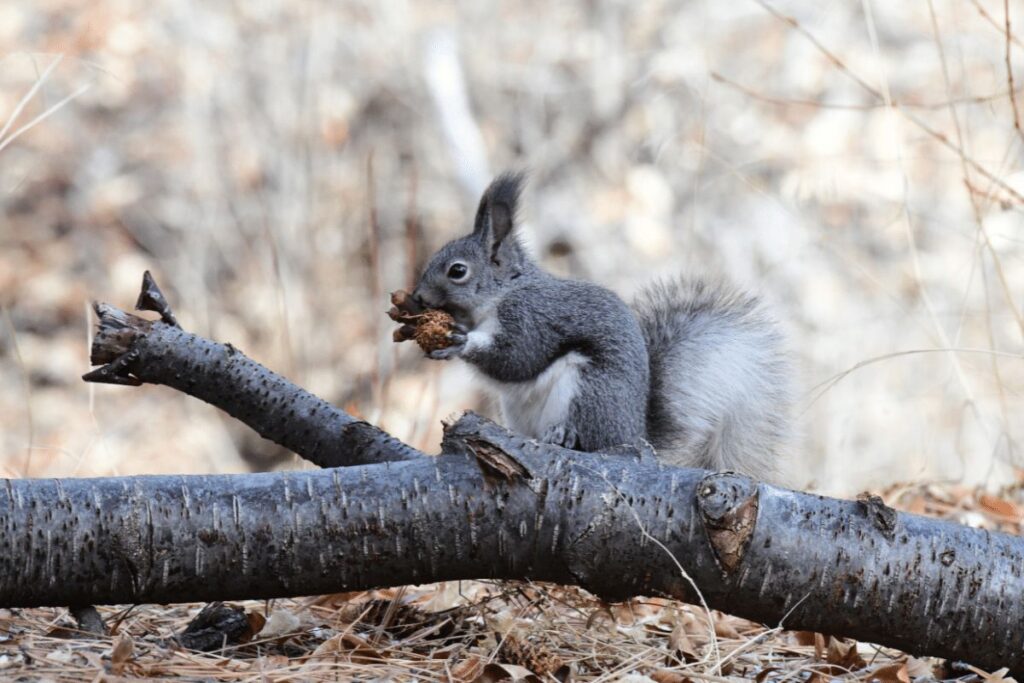
All of these animals are important members of the ecosystem and play a role in keeping the area healthy and balanced. Visitors to Enchanted Rock may see these creatures while hiking through the various trails.
The rock squirrel is the most common of these species and can be seen foraging for food on rocks, logs, or in fallen trees. They are primarily herbivores that feed on small fruits, nuts, and seeds. Rock squirrels also often hoard food by storing it in underground burrows.
The white-tailed antelope squirrel is smaller than the rock squirrel and has a distinctive white tail. They have adapted to living in arid climates and survive off of seeds, roots, and other small plants they find in the area.
Abert’s squirrel is a grayish species that prefers to stay at higher elevations within the park. As omnivores, they feed both on plant matter such as flowers and leaves as well as insects like caterpillars and beetles. Abert’s squirrels often build nests out of leaves or twigs in trees for protection from predators.
The various types of squirrels found at Enchanted Rock State Natural Area provide an important source of food for other animals in the area while also keeping parks healthy by controlling certain populations of plants and insects.
Wild Turkeys
Wild Turkey is the largest game bird in North America, with males typically weighing in at around 20 pounds. They are impressively powerful flyers, capable of reaching speeds of up to 55 miles per hour!
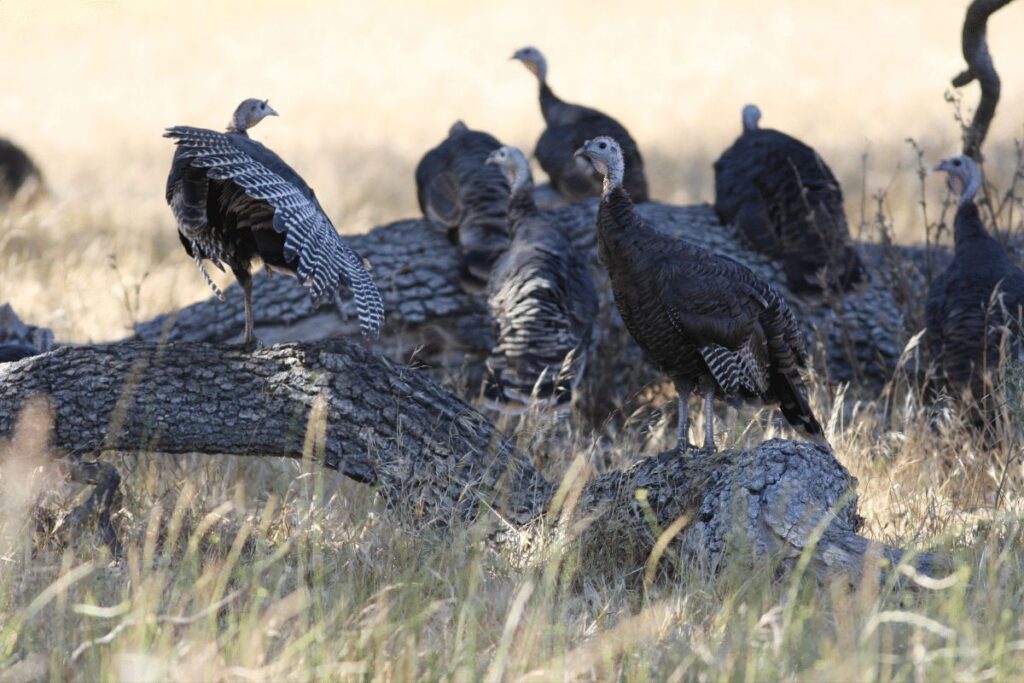
Though they are most often seen strutting around on the ground, they roost in trees at night. Turkeys are social creatures and live in flocks consisting of both males and females.
During mating season, which occurs from late March through May, male turkeys (toms) engage in an elaborate courtship ritual to attract a mate.
Toms will puff out their chests, spread their tail feathers, and gobble loudly to catch a female’s attention. Once a female is interested, the two will mate and the female will build a nest in which to lay her eggs.
Fairy Shrimp
Fairy shrimp are one of the many animals you might see while hiking at Enchanted Rock State Natural Area! These tiny creatures are found in temporary pools of water that form after rainfall. When the pools dry up, the fairy shrimp can survive by burrowing into the mud at the bottom. hatch from eggs that can survive long periods of drought.
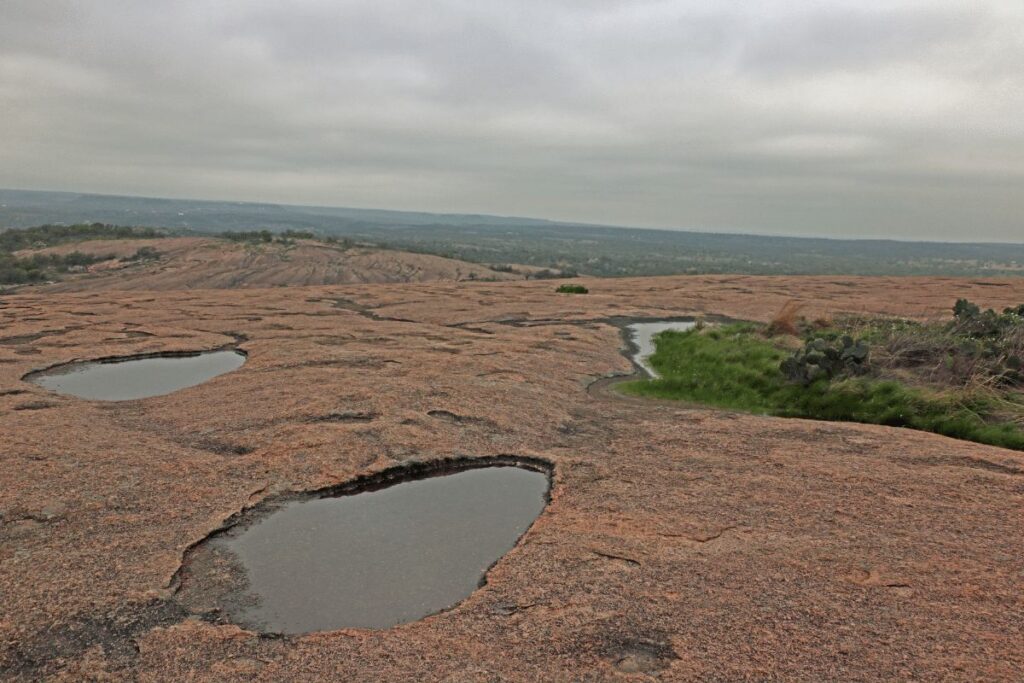
Fairy shrimp are crustaceans, related to crabs and lobsters. They get their name from their delicate, transparent bodies. Adult fairy shrimp can range in size from 1/2 to 1 inch long. Their bodies are segmented and have long, hair-like appendages used for swimming and collecting food.
Fairy shrimp are carnivorous and eat other small invertebrates such as mosquito larvae. They are an important food source for many animals, including fish, amphibians, reptiles, birds, and mammals.
When conditions are right and a pool of water forms, fairy shrimp eggs hatch into nauplii. Nauplii are microscopic creatures that look like miniature adults. After about two weeks of growth and moulting, they develop into adults. Adults live for about two months before drying up conditions kill them off or they are eaten by predators.
The next time you’re out on a hike at Enchanted Rock State Natural Area, keep your eyes peeled for these amazing creatures!
Meadowlarks
One of the most beautiful birds you might see while hiking in Enchanted Rock State Natural Area is the meadowlark. There are two species of meadowlarks in North America, the western meadowlark and the eastern meadowlark.
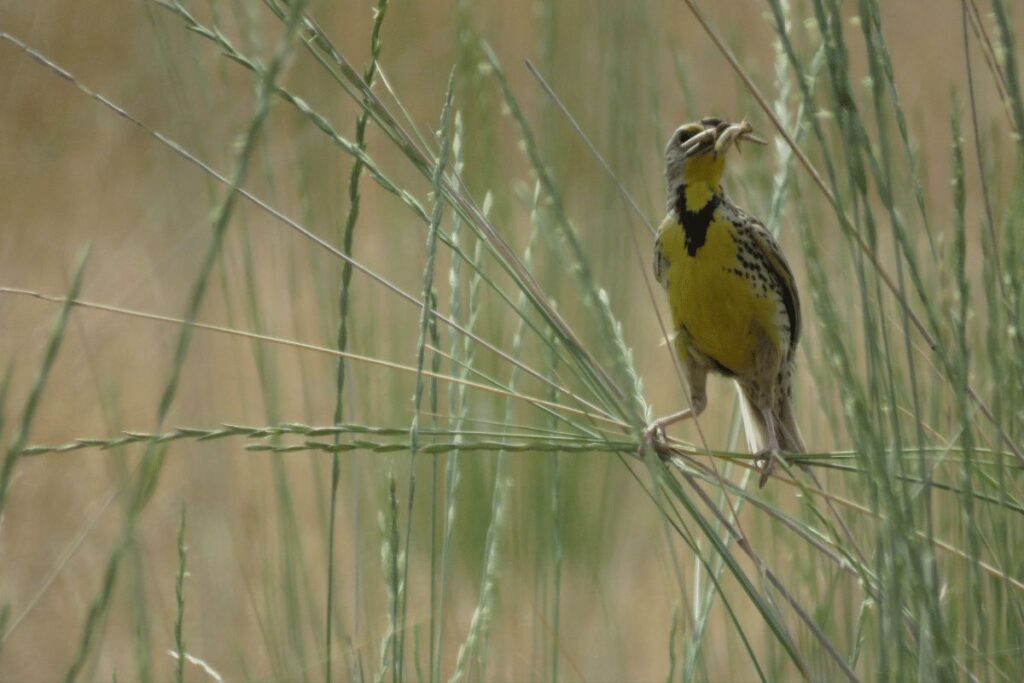
Both have yellow underparts with a black “V” on their chest. The eastern meadowlark also has a yellow head with a black stripe down its throat. Meadowlarks are about 9-10 inches long and have long tails that they often hold upright.
Their song is a series of rapid, melodious notes that drop in pitch at the end. You may hear them singing from fence posts or utility wires. In Texas, you’re most likely to see western meadowlarks from March through October.
Meadowlarks feed on insects, seeds and berries, so you may catch them hunting in meadows and grasslands. They’re also fond of forage crops like corn, rye and oats. These birds are adept at hovering over the ground in search of food and can move quickly to snatch up an insect.
Checkered White Flight butterflies
One of the most beautiful sights in Enchanted Rock State Park is the Checkered White Flight butterfly. This delicate creature is mostly white, with black spots on its wings. When it takes flight, the Checkered White Flight looks like a piece of living art.
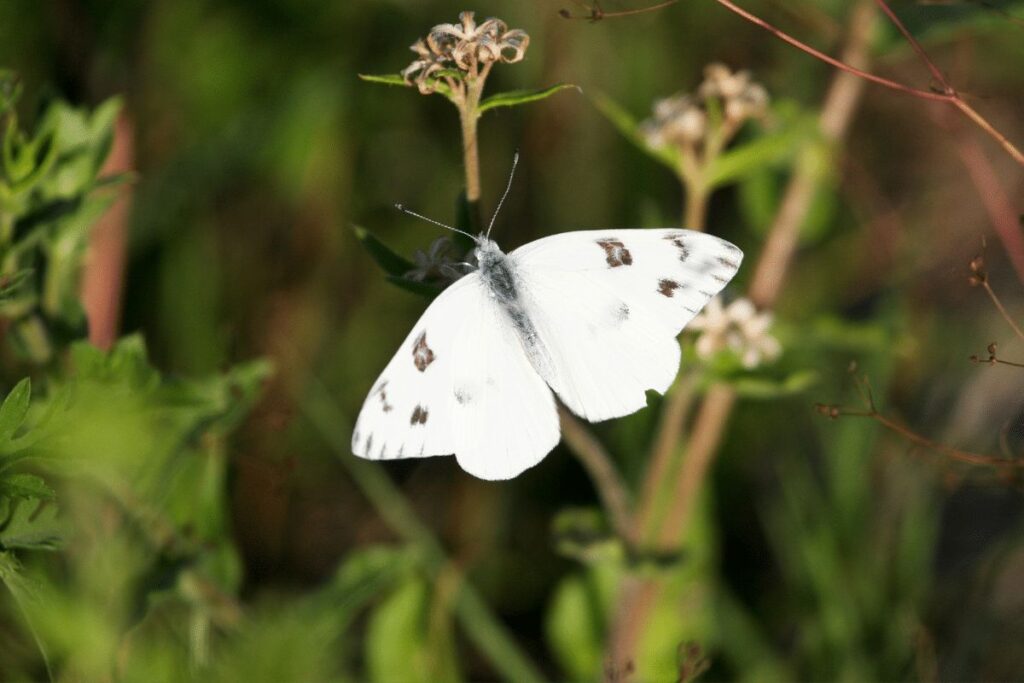
The best time to see the Checkered White Flight is in the spring and early summer when the butterflies are most active. However, if you’re lucky, you may catch a glimpse of one at any time of year.
The Checkered White Flight usually hides among the dense foliage and rocks in the area. But if you’re patient and quietly observe their movements, you may be rewarded with a mesmerizing display of agility and beauty.
These small butterflies often congregate in rose gardens, which makes them more visible to observers. If you’re visiting Enchanted Rock in the spring or summer, keep your eyes peeled for these beautiful creatures!
The Bell’s Vireo
The Bell’s Vireo is a small songbird that is olive-green on its back and white on its belly. It has a long, slender bill that it uses to probe for insects in trees. The Bell’s Vireo can be found in woodlands in the western United States and Mexico.
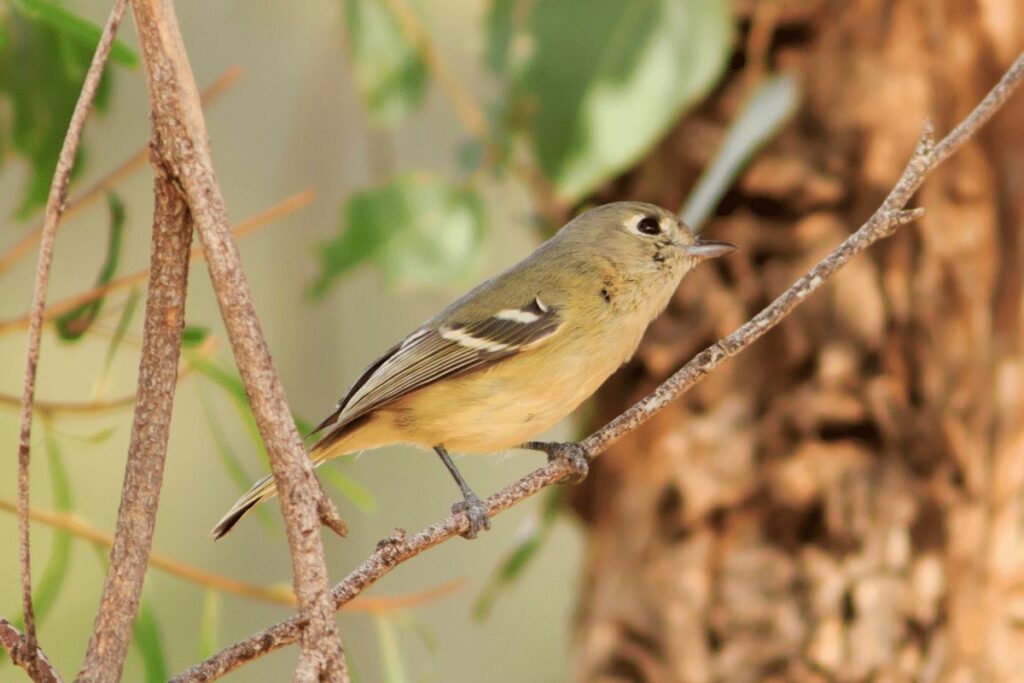
The Bell’s Vireo is a common species and its population is considered to be stable. Its diet consists mainly of insects, but it also consumes some berries.
When breeding, the Bell’s Vireo often builds a cup-shaped nest near the ground with grasses, mosses and other materials.
They usually produce two broods each season, laying two to four eggs in each clutch. Both parents share in caring for the young birds until they are able to leave the nest on their own.
The Black Vulture
Oftentimes, the first animal seen while hiking is the Black Turkey Vulture. Soaring in lazy circles high above, these large birds are ubiquitous in central Texas. With a wingspan of up to six feet, they’re hard to miss.
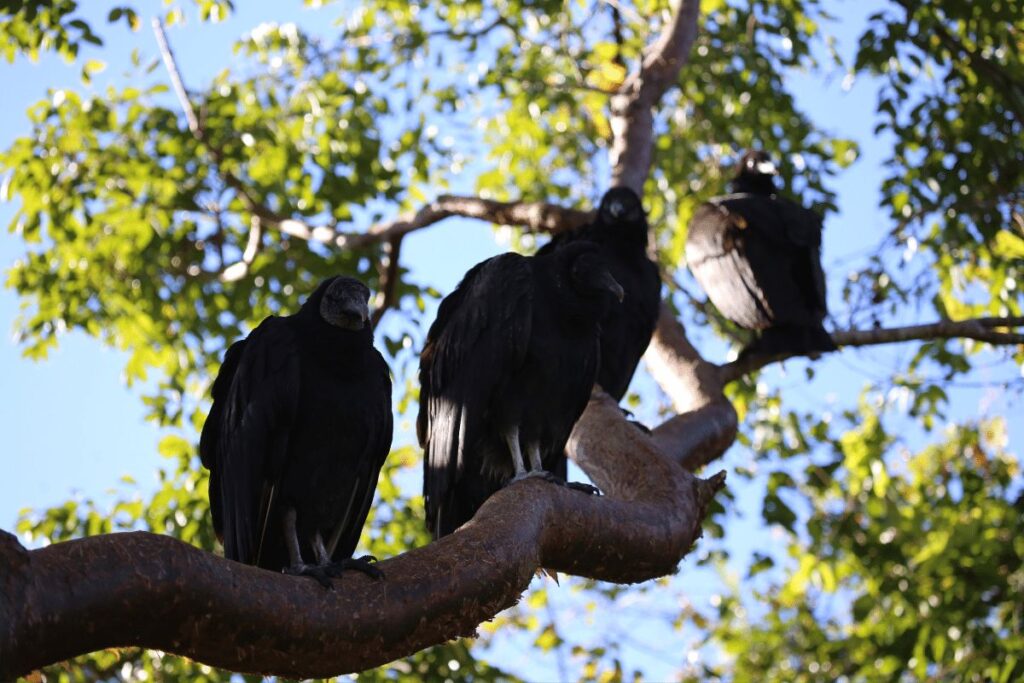
Black vultures are not shy and will often land close to hikers in search of food. While they primarily eat carrion, they will also steal food from other animals, raid garbage cans, and even attack small animals. Despite their scavenging habits, black vultures play an important role in the ecosystem by cleaning up dead animals.
The black vulture can be identified by its distinctive shape, black and gray feathered wings, white head, and yellow bill. The feathers on their heads are often darkest near the face, giving them an almost wolf-like appearance. These birds are also social creatures and it’s not uncommon to see flocks of them soaring through the sky together looking for food.
Rabbits
Rabbits are one of the most commonly seen animals in Enchanted Rock State Natural Area! While they may look small and harmless, rabbits can actually be quite pesky. They have been known to eat flowers, vegetables, and even tree bark. If you see a rabbit while hiking, be sure to give it plenty of space and do not attempt to touch or catch it.
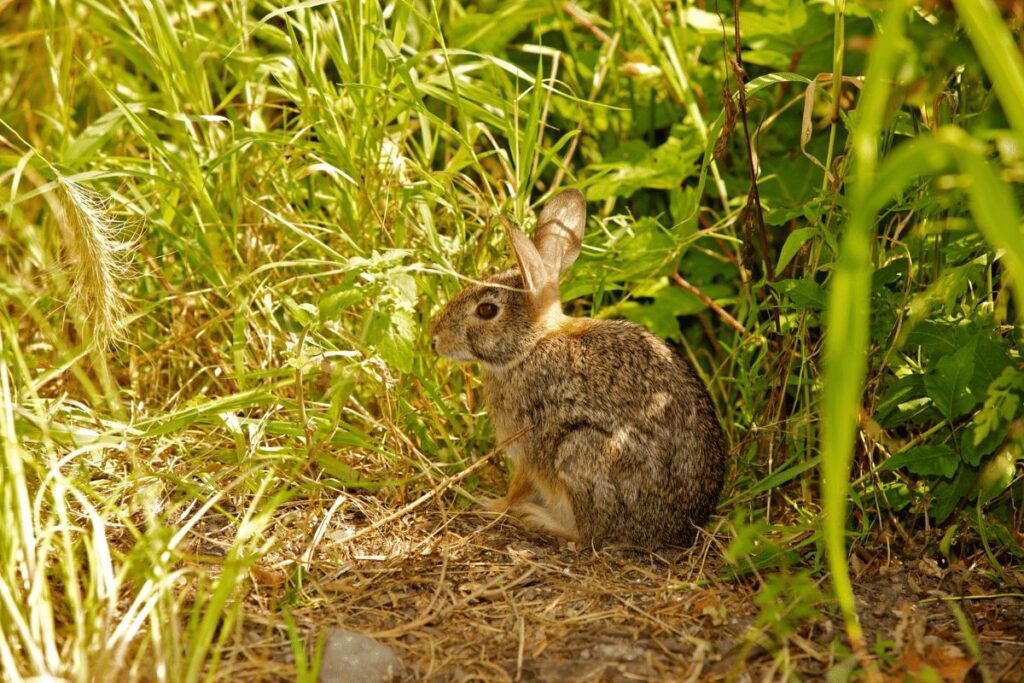
Rabbits are also popular with birdwatchers, as they are often seen darting amongst the trees. Rabbits are herbivores, eating plants and grasses to get their nutrients. Common types of rabbits found in Enchanted Rock State Natural Area include eastern cottontails, brush rabbits, and jackrabbits.
Rabbits can be great members of the local wildlife community-but it’s important to remember that they do need room to roam! Be sure to stay on the trails while hiking and never attempt to feed or touch a wild rabbit. In this way, you can help ensure that these adorable animals will remain part of the diverse ecosystem of Enchanted Rock.
Tips for Seeing Animals in the State Park.
1. Get on a schedule: Know when the animals are most active and plan your hike around that time. For example, many animals are more active at dawn and dusk, so consider hiking during those times.
2. Make noise: Animals will often avoid hikers because they see or hear them coming from a distance. To increase your chances of seeing wildlife, make some noise while you hike (e.g., talk to your companions, or sing).
3. Be patient and stay still: If you do see an animal, resist the urge to chase it. Instead, watch from a distance and be patient. The longer you stay still, the more comfortable the animal will become with your presence and the greater chance you have of getting a good look at it.
4. Move slowly and silently: Animals usually have better senses of hearing, sight and smell than humans, so if you want to get close to them, move slowly and silently. Don’t run or make sudden movements that might scare them away.
5. Respect their environment: Do not disturb nesting sites, habitats or other signs of animal activity. By respecting the animal’s environment, you’ll help preserve it for future generations of visitors to enjoy.
Safety Considerations While Hiking
There are many different animals that call Enchanted Rock State Rock home. While it is fun to see these animals while hiking, it is important to remember that they are wild and can be dangerous. Here are some safety considerations to keep in mind while hiking:
1. Respect wildlife. Do not approach or try to touch the animals. Remember that they are wild and can bite or scratch if they feel threatened.
2. Keep your distance. If you see an animal, observe it from a safe distance. Use binoculars if necessary.
3. Make noise as you hike. This will help to scare away any animals that might be lurking around and will also alert them to your presence so they can avoid you.
4. Be aware of your surroundings. Pay attention to where you are walking and be on the lookout for animal nests or dens. Steer clear of areas where you know there is wildlife activity to avoid disturbing them.
5. Hike with a partner whenever possible so there is always someone with you in case of an emergency.
6. Carry a map and compass with you and know how to use them. Make sure you have the proper navigational tools to get back to safety.
7. Wear bright colors. This will help you stay visible in case of an emergency, as well as make it easier for wildlife to detect your presence.
8. Stay on marked trails and respect any posted signs or warnings from park officials.
9. Make sure you have plenty of water, snacks, sun protection, and bug spray before heading out on your hike.
10. Let someone know when and where you are going so they can alert authorities if necessary and they can come looking for you should you become lost or injured on the trail.
Conclusion
Hiking through Enchanted Rock State Park can be a rewarding experience for all wildlife enthusiasts. From the diverse range of birds to deer, turkeys, foxes, and even coyotes, there’s always something new to discover along your hikes.
We hope that our list has provided you with some insight into what creatures could possibly await you on your own adventures in this beautiful park. So grab some binoculars and sturdy shoes and head out in search of these 16 amazing animals!
Additionally, the Enchanted Rock State Park offers visitors a range of other activities, such as camping and bouldering. So don’t hesitate to stop and take part in these exciting experiences during your hikes!
We hope you enjoyed our article on the animals found at Enchanted Rock State Park. Be sure to take some time to appreciate the beauty of nature that can be found here.

